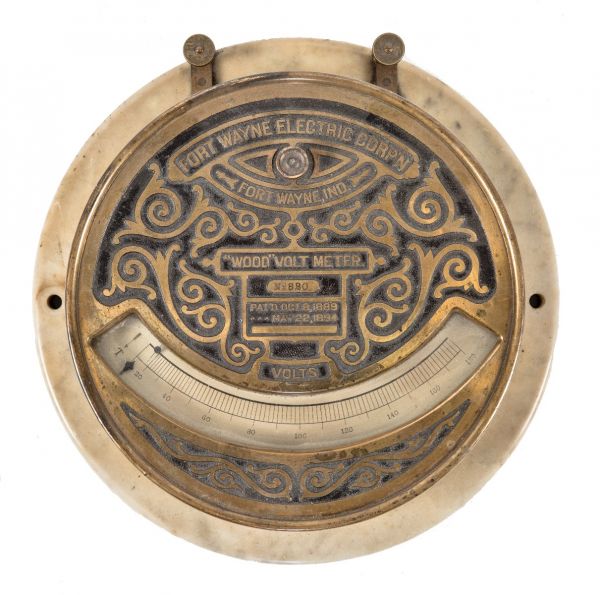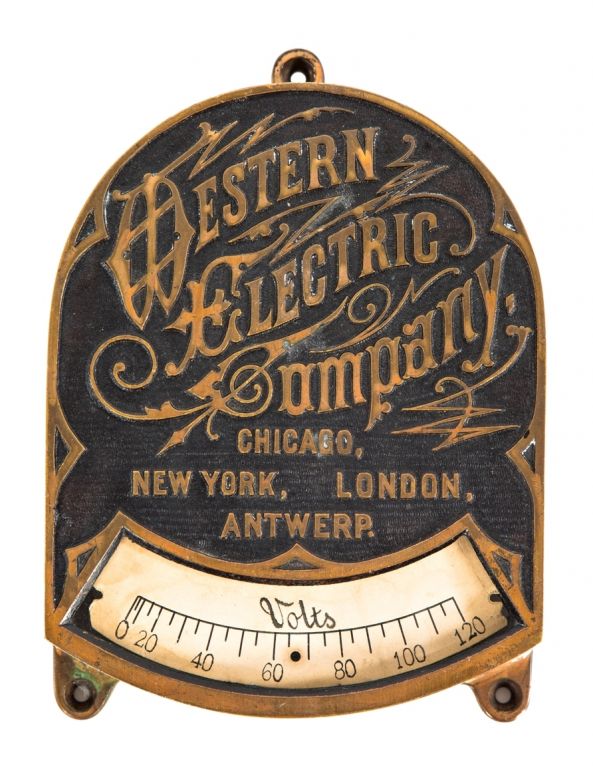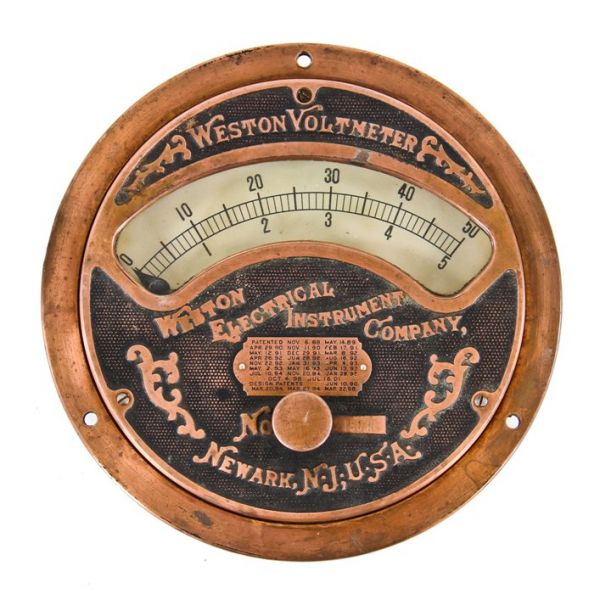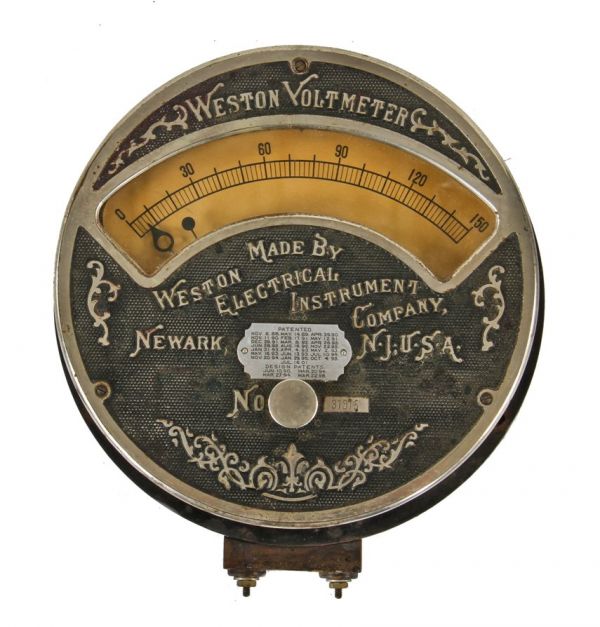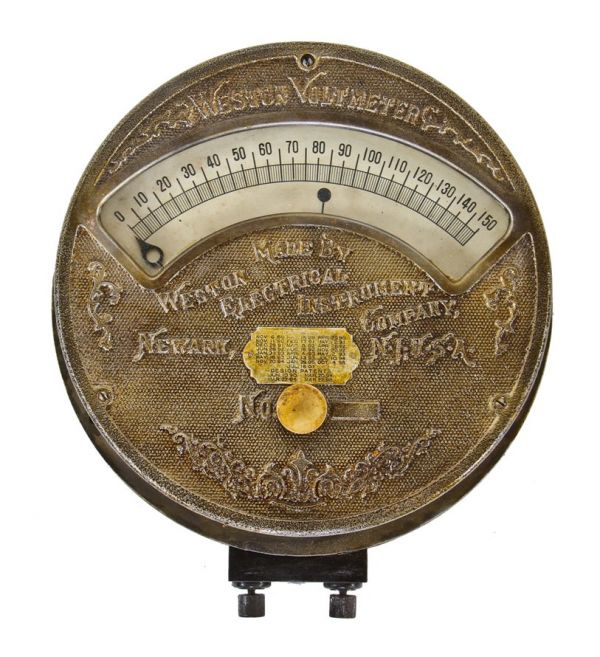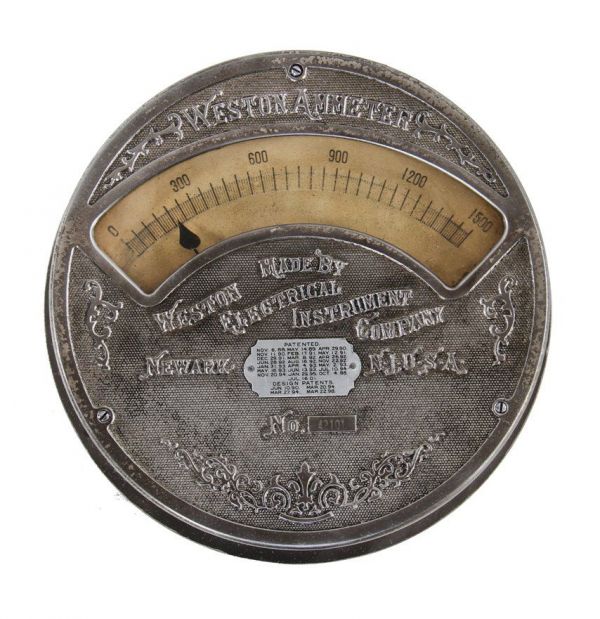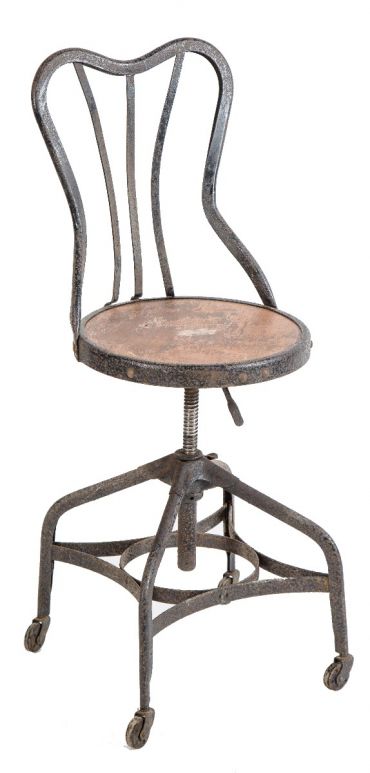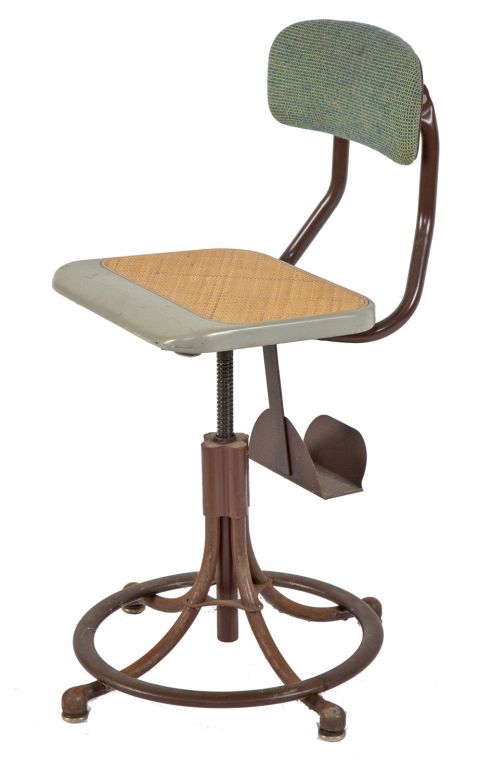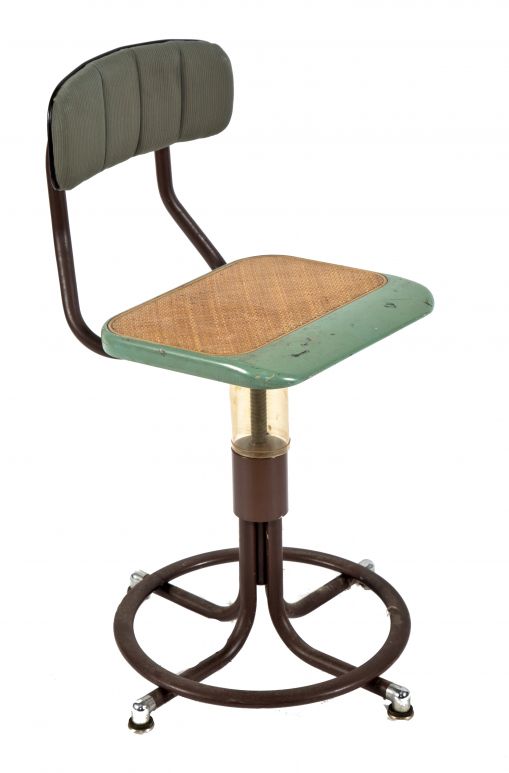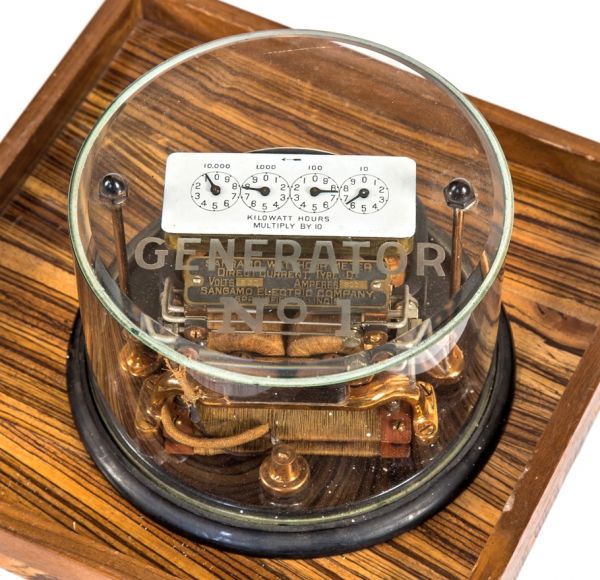late 19th century ornamental cast bronze "wood type" flush mount switchboard volmeter with original certification label signed by thomas duncan
SOLD
Out of stock
SKU
UR-30443-19
the fort wayne electric works, fort wayne, ind.
rare late 1890's electrical measuring device in the form of a surface-mount switchboard "wood system" voltmeter, designed and patented beginning in 1889 by notable electrical engineer and inventory james j. wood of brooklyn, ny. the circular-shaped voltmeter was used for measuring electrical potential difference between two points in a given electric circuit. the wood meter is an analog type, that contains a pointer that moves along a scale in proportion to the voltage of the circuit. the decorative base is made entirely of heavy cast bronze with baked enameled inlay used to accentuate the casting detail and lettering. the rare mounting plate containing two large holes for threaded copper bolts is comprised of white alabama marble. the flush mount voltmeter features a curved view port or opening retaining the original "wavy" clear glass. the linear scale is made of brass with lightly incised numbers and scale. the slightly raised lettering along the face plate identities the manufacturer along with patent dates and serial number. the backside of the meter retains the original paper label or certificate signed by thomas duncan - who was involved in the development of a recording wattmeter and went on to establish the duncan electric mfg. company in lafayette, ind. the voltmeter contains a nicely aged surface patina with original baked black enameled inlay largely intact. the fort wayne electric works - a division of the general electric company and manufacturer of standard electrical apparatus used throughout the world, had its beginning in 1881, when james a. jenney, inventor of an electric arc lamp and a small dynamo, came to fort wayne and installed his apparatus in the establishment of evans, mcdonald and company. on november 1, of this year, with an authorized capital of $100,000, ronald t. mcdonald organized the fort wayne jenney electric light company, that dealt in both manufacturing and selling of electrical goods. the original company occupied a building at the southwest corner of calhoun and superior streets used by john h. bass as a boiler shop, and later removed to a building on the south side of west superior street at the foot of wells street, a site afterward occupied by the first electric light plant. the third uptown building used by the company was a rented structure located on east columbia street. next the company purchased a small vacated plant of the gause agricultural works at broadway and the tracks of the pittsburgh, fort wayne and chicago railroad, which formed the nucleus of the building expansion of company's shops and offices. in 1885 m. m. m. slattery, of massachusetts, was engaged as chief electrician. the thompson-houston electric company, of lynn, massachusetts, secured a controlling interest in the stock in 1888, and at that time the word "jenney" was dropped from the name of the company. in november, 1888, the entire plant was destroyed by fire, but it was rebuilt, and operations were resumed in july, 1889. with the acquisition of the brooklyn factory of the thompson houston electric company in may, 1890, james j. wood, who had licensed the company to manufacture under his patents, was engaged to come to fort wayne to superintend the manufacture of arc lighting apparatus under his rights, and also the slattery incandescent apparatus. many expert workmen were added to the force. the "wood" systems would attain a nation-wide reputation shortly thereafter. financial difficulties resulted in june, 1894, in the leasing of the plant to the newly organized fort wayne electric corporation and again in january, 1899, when at that time, the plant was purchased by the general electric company, of schenectady, new york. mr. wood continued his services as factory manager and chief electrician. from this period onwards, but much of the success of the plant had been due to the efforts of mr. hunting and mr. wood, surrounded by an organization of progressive, capable men. in june, 1911, the fort wayne electric works was merged with the general electric company, but the business was carried on in much the same form as before, but under the name of the fort wayne electric works of the general electric company, in reality a department or division of the general electric company.
You Might Also Like
WORDLWIDE SHIPPING
If required, please contact an Urban Remains sales associate.
NEW PRODUCTS DAILY
Check back daily as we are constantly adding new products.
PREMIUM SUPPORT
We're here to help answer any question. Contact us anytime!
SALES & PROMOTIONS
Join our newsletter to get the latest information

